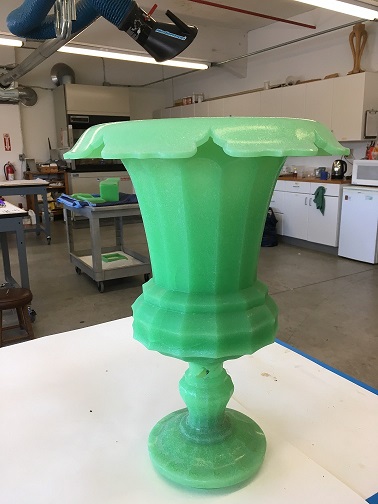
People may be nervous to handle uranium glass for fear of getting radiation poisoning. However, radiation emitted from uranium glass objects is often well below the exposure amounts recommended by the United States Nuclear Regulatory Commission. Our bodies are subjected to general radiation through everyday life here on Earth. As long as we don’t inhale or ingest the uranium glass, all should be well.
Unfortunately, this particular uranium glass piece has come down with a case of “glass disease.” The glass surface is crizzled, which gives the appearance of networks of tiny fractures and cracks that cause the glass to weaken and flake. This disease is a result of an inherent fault in the chemical composition of the original glass, which is stressed by the relative high humidity and salty air at Beauport (located directly on Gloucester Harbor in Massachusetts).
Most glass is made up of silica and alkaline compounds, which create an even harmony. pH testing revealed that the alkali is leaching out of this urn, causing instability in the glass. Water and humidity are thus able to attack and dissolve the glass, giving the surface its crackly, hazy appearance.
Although crizzling cannot be reversed, it can be halted. To stabilize the uranium glass and prevent future deterioration, we are soaking the glass in deionized water in half-day increments. This will remove the harmful salt byproducts. Before and after each soak, the water is tested using a Digital Conductivity Meter to measure the amount of salt removed from the object and into the water.
We will continue to soak the glass until most of the salt content is removed. Then we will allow the urn to air dry. This treatment should halt future breakdown of the glass surface so that it can be safely returned to the Belfry Chamber at Beauport.